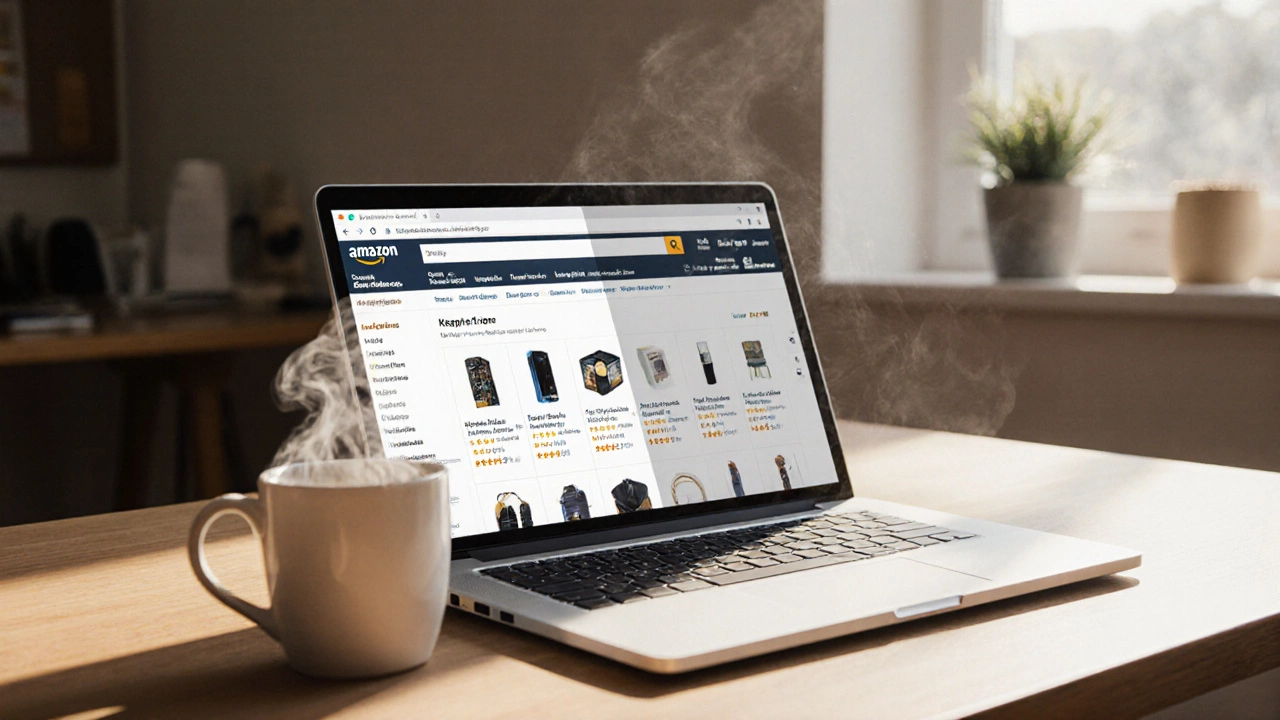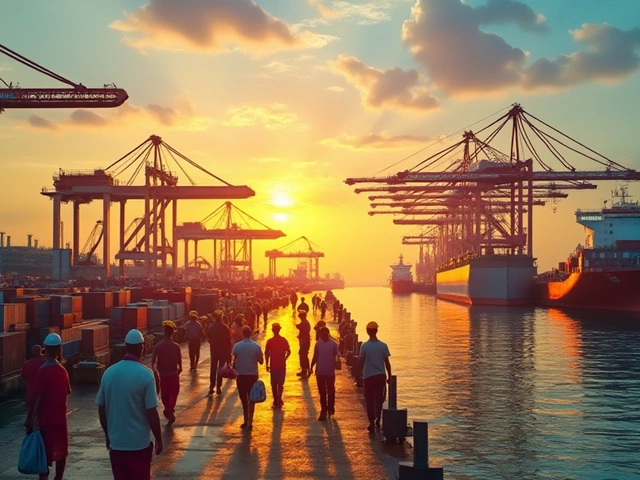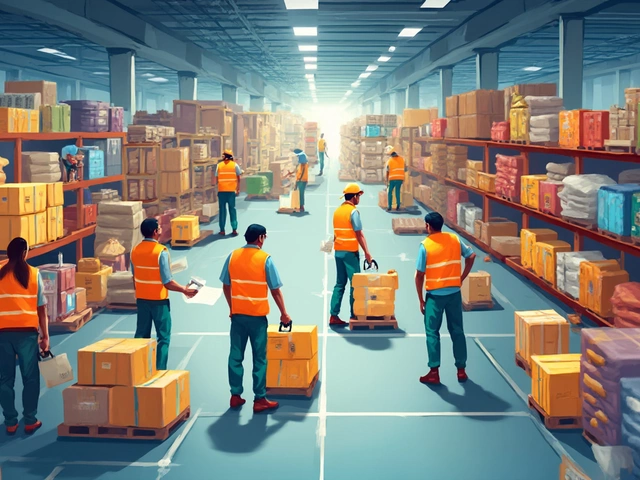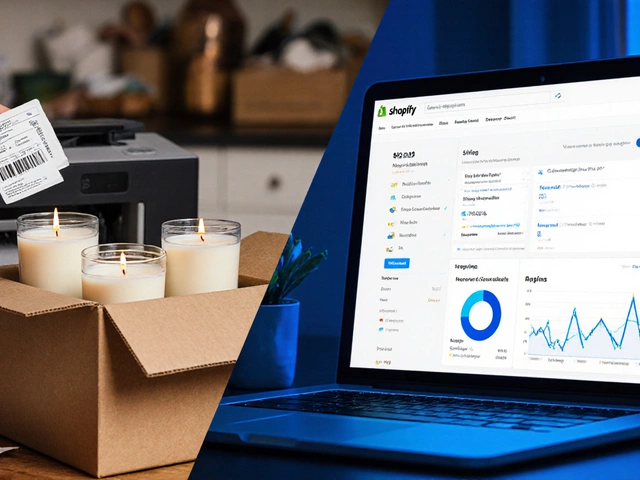Amazon FBA Fee Calculator
Calculate your estimated Fulfillment by Amazon (FBA) fees based on product characteristics and shipping destination. This tool helps sellers understand the cost structure of using Amazon's fulfillment service.
FBA Fee Breakdown
| Fee Type | Amount |
|---|---|
| Weight Handling Fee | $0.00 |
| Storage Fee | $0.00 |
| Referral Fee (6% of sale) | $0.00 |
| Monthly Fees | $0.00 |
| Total Monthly Cost | $0.00 |
When people hear Amazon is a global tech giant that started as an online bookstore and now sells everything under the sun, the first question is often: is this a pure Amazon e-commerce site or something else?
Quick takeaways
- Amazon runs a hybrid model: it sells its own inventory and hosts millions of third‑party sellers.
- The platform’s logistics network (Fulfilment by Amazon, Amazon Logistics) is a core part of its e‑commerce engine.
- Because it mixes retail, marketplace, and logistics, Amazon blurs the line between a typical e‑commerce site and a full‑service logistics provider.
- Understanding Amazon’s structure helps sellers decide whether to use FBA, ship themselves, or both.
- Amazon’s dominance reshapes how other retailers think about e‑commerce, fulfillment and last‑mile delivery.
What does "e‑commerce" really mean?
E‑commerce is defined as the buying and selling of goods or services over electronic systems, typically the internet. The key ingredients are:
- A digital storefront where customers browse products.
- A transaction layer that handles payment, tax and order processing.
- Delivery of the purchased item to the buyer’s door.
Anything that ticks those three boxes qualifies as e‑commerce, regardless of whether the seller owns inventory or simply connects buyers to third‑party vendors.
Amazon’s business model: Retail + Marketplace
Amazon operates two parallel tracks:
- Amazon Retail: The company buys products wholesale, stores them in its own warehouses and sells directly to consumers.
- Amazon Marketplace: Third‑party sellers list items alongside Amazon’s own catalog. When a buyer clicks “Buy Now,” the platform coordinates the sale, payment and shipping.
Both tracks sit on the same consumer‑facing website, which is why most visitors don’t realize they’re browsing two distinct business models at once.
Marketplace explained
Marketplace refers to an online platform that brings together independent sellers and buyers under one digital roof. Amazon’s Marketplace contributes over 60% of its total units sold, according to the 2024 earnings call.
Key features for sellers include:
- Access to Amazon’s massive customer base (over 300 million active users worldwide).
- Integrated tools like Seller Central for inventory, pricing and advertising.
- Choice of fulfillment: ship directly (FBM) or let Amazon handle it (FBA).
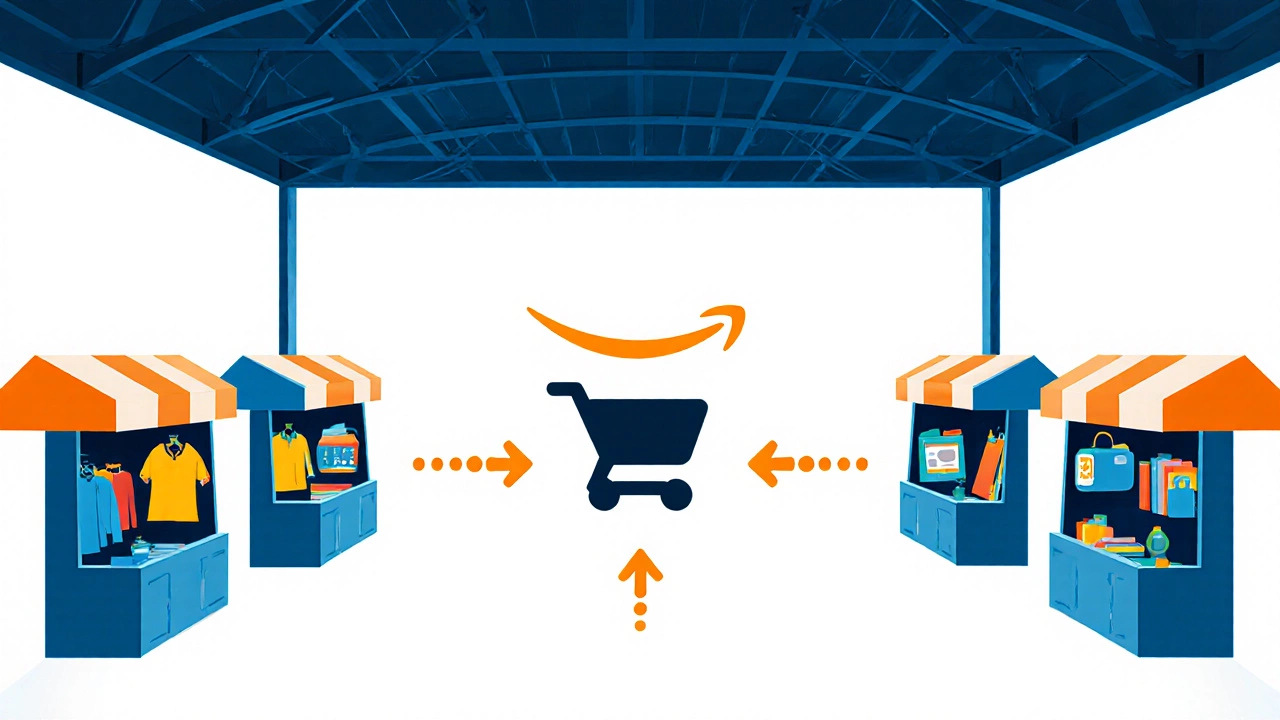
Fulfilment by Amazon (FBA) and the logistics backbone
Fulfilment by Amazon is a service where sellers send inventory to Amazon’s warehouses and the giant takes care of picking, packing and shipping. FBA is more than a storage service; it powers:
- Prime eligibility - fast two‑day (or same‑day) delivery for millions of items.
- Amazon Logistics - the in‑house carrier network that handles the last mile.
- Returns processing and customer service on behalf of the seller.
Because FBA integrates directly with the checkout flow, buyers often assume that Amazon itself is the seller, even when the product originates from a small third‑party vendor.
Is Amazon a logistics company?
When you strip away the retail and marketplace layers, what remains is an extensive logistics operation. Amazon runs:
- Over 150 fulfillment centers globally (including Canada’s $1.2 billion Toronto hub).
- A fleet of 400+ aircraft, 5000+ delivery vans, and a growing network of electric vans called “Amazon Scout”.
- Amazon Prime Air - the experimental drone delivery service being piloted in select U.S. and European cities.
These assets let Amazon guarantee the speed and reliability that define modern e‑commerce, but they also make the company a de‑facto logistics provider for countless small sellers.
How Amazon fits the e‑commerce definition
Putting the pieces together:
- Digital storefront - the Amazon.com website (and regional domains) showcases both Amazon‑owned and third‑party products.
- Transaction layer - Amazon processes payments, applies taxes, and offers one‑click checkout.
- Delivery - Fulfilment by Amazon and Amazon Logistics move the product from warehouse to customer’s doorstep.
All three pillars are present, so by the strict definition, Amazon is unmistakably an e‑commerce platform. The twist is that it also owns the logistics chain that most other e‑commerce sites outsource.

Comparison: Amazon vs. Traditional e‑commerce platforms
| Aspect | Amazon | Shopify | Walmart Marketplace |
|---|---|---|---|
| Business model | Hybrid - retail + marketplace | Self‑hosted storefront for merchants | Marketplace only, no own‑brand sales |
| Seller onboarding | Open, but strict performance metrics | Requires subscription plan, full control | Invitation‑only, limited categories |
| Fulfilment options | Own warehouses (FBA) + third‑party carriers | Integrates with UPS, FedEx, DHL, etc. | Seller ships directly, no FBA equivalent |
| Prime/fast shipping | Two‑day+ guaranteed for Prime items | Depends on merchant’s carrier choice | Standard shipping unless seller opts for expedited |
| Revenue model | Product margins + referral fees + subscription (Prime) | Monthly SaaS fees + transaction fees | Referral fees per sale |
Common misconceptions
- “Amazon just sells its own stuff.” - In reality, third‑party sellers account for the majority of listings and sales volume.
- “If I use FBA, Amazon owns my brand.” - FBA only handles logistics; branding, pricing and customer communication stay with the seller.
- “Amazon’s logistics are separate from its e‑commerce business.” - The logistics arm exists to fulfill e‑commerce promises, making the two inseparable.
What this means for you
If you’re a retailer wondering whether to sell on Amazon, think of the platform as a full‑service e‑commerce partner - not just a traffic source. You get:
- Instant access to a global buyer pool.
- Options to outsource storage, packing and shipping through FBA.
- Prime eligibility that can boost conversion rates up to 30%.
But you also give up some control over pricing, branding and the post‑purchase experience. Weigh those trade‑offs before committing.
Bottom line
Answering the headline question: yes, Amazon is an e‑commerce platform, but it’s also a massive logistics operator that blurs the traditional lines between retailer, marketplace and carrier. Recognizing this hybrid nature helps businesses decide how to leverage Amazon’s strengths while mitigating its constraints.
Is Amazon considered a marketplace or a retailer?
Amazon does both. It sells its own inventory (retailer) and also lets independent sellers list products (marketplace). The two models coexist on the same site.
Do I need to use Fulfilment by Amazon to sell on the platform?
No. You can ship directly to customers (FBM) or store inventory in Amazon’s warehouses (FBA). FBA gives you Prime eligibility and handles returns, but it adds fees.
How does Amazon’s logistics network affect delivery speed?
Amazon’s own carriers, regional hubs and advanced tech (like Amazon Scout robots) enable two‑day and even same‑day delivery for Prime members. That speed is a core competitive advantage.
Can I sell internationally through Amazon?
Yes. Amazon operates separate marketplaces (e.g., amazon.co.uk, amazon.de, amazon.ca). Using the Global Selling program lets you list products across multiple regions.
What are the main fees Amazon charges sellers?
Typical fees include a referral fee (varies by category, usually 6‑15%), a variable closing fee for media items, and optional FBA fulfillment fees based on weight and size.
